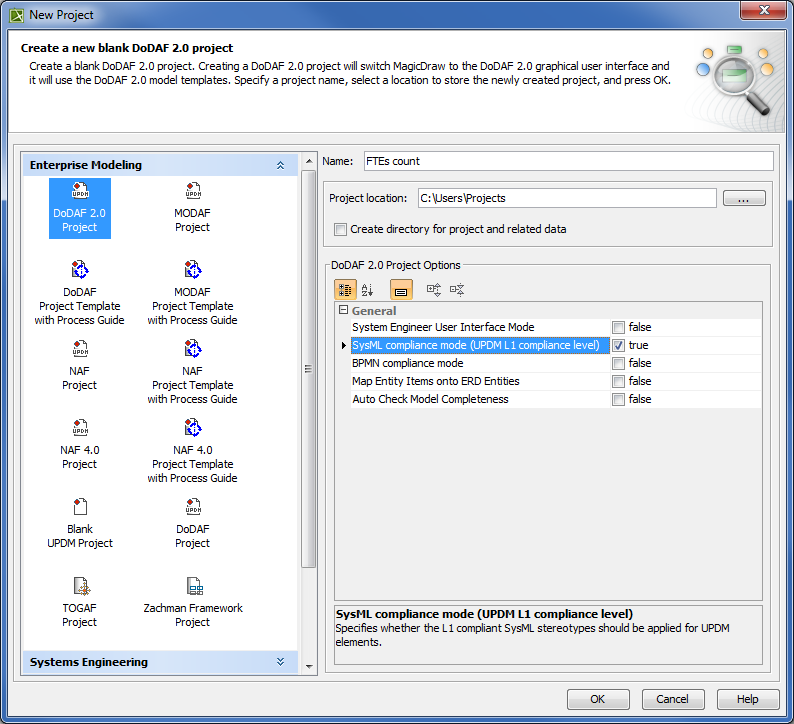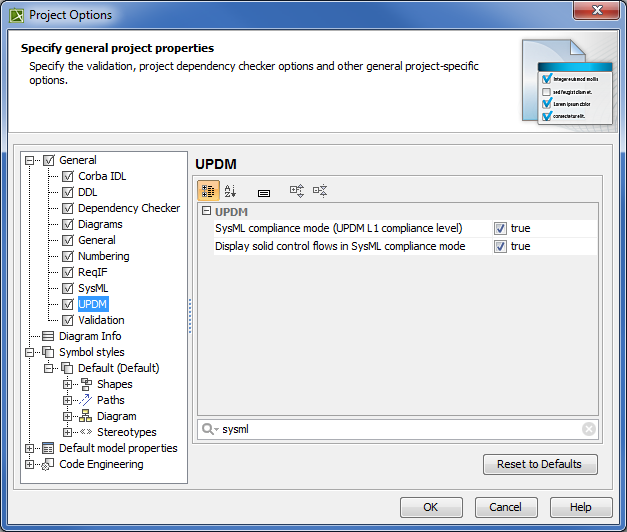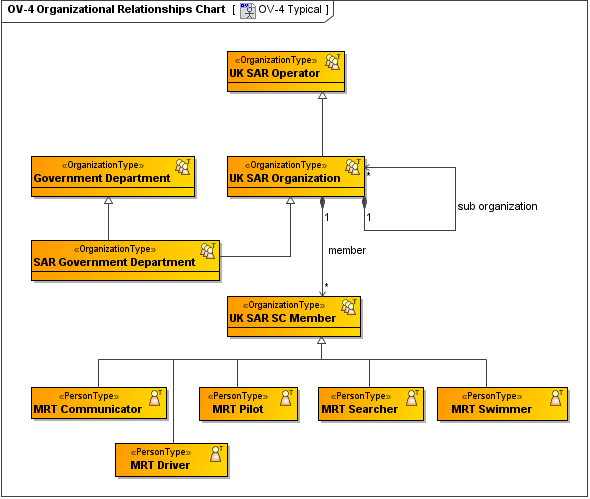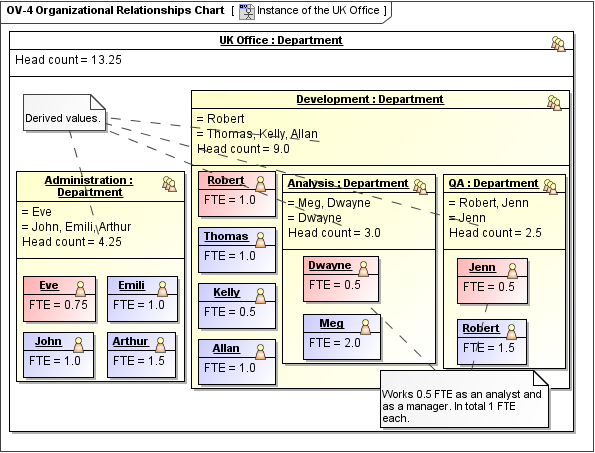You can use SysML capabilities in your UPDM model. For that purpose you can enable the SysML compliance mode in one of the following ways:
- Enable the SysML compliance mode while creating a new project.
- Enable the SysML compliance mode after the project is created.
To enable SysML compliance mode while creating a new project
- Click File > New Project. The New Project dialog opens.
- Select project template, specify its name, and location.
- In the <project template> Project Options area, set the SysML compliance mode (UPDM L1 compliance level) property value to true.
- Click OK, when you are done.

To turn on SysML compliance mode after the project is created
- Click Options > Project. The Project Options dialog opens.
- Select General > UPDM.
In the UPDM property group, set the SysML compliance mode (UPDM L1 compliance level) property value to true.
You can use the Quick filter box to find the SysML compliance mode (UPDM L1 compliance level) property more quickly. Simply start typing the property name in the Quick filter box.
- Click OK.
When the SysML compliance mode is turned on, control flows are represented as dashed line in activity based diagrams. You can change the representation style to the solid line.
To change the representation to the solid line
- Click Options > Project. The Project Options dialog opens.
- Select General > UPDM.
In the UPDM properties group, set the Display solid control flows in SysML compliance mode property value to true.
You can use the Quick filter box to find the Display solid control flows in SysML compliance mode property more quickly. Simply start typing the property name in the Quick filter box.
Click OK.

Case Study
The following example describes the actual situation, how you can use the SysML compliance mode in the UPDM model.
Let us say, we need to describe a full-time equivalent (FTE) calculations in the UPDM model.
First, we need to create the typical organizational structure using OV-4 Organizational Relationship Chart diagram. The typical organizational structure defines types of departments and roles and how they are associated together in the modeled enterprise. The Department can contain any number of Employees and any number of sub Departments.

Secondly, we generate an actual organizational chart based on the typical organizational chart (see Instantiating Structures). An actual organizational chart shows concrete departments and residing employees.
Each employee works a certain number of FTEs.

Thirdly, we can use the SysML Parametric Diagram to describe the recursive FTE’s calculation for the selected department and each residing sub-department.

You can execute the described calculations using Cameo Simulation Toolkit.